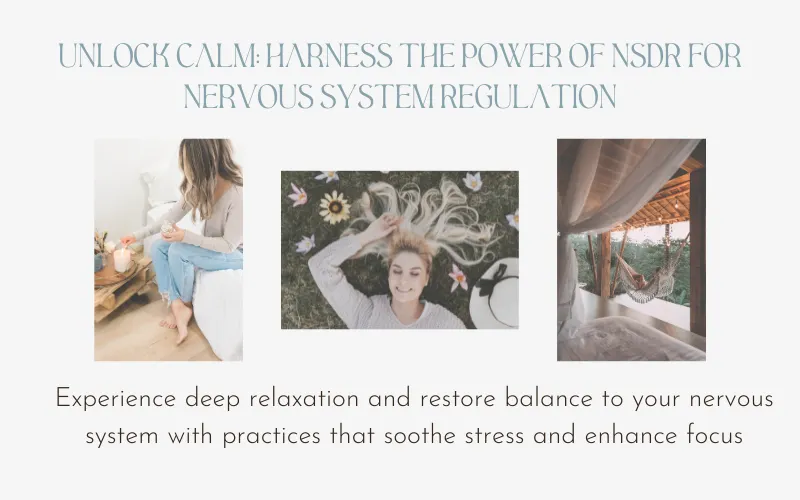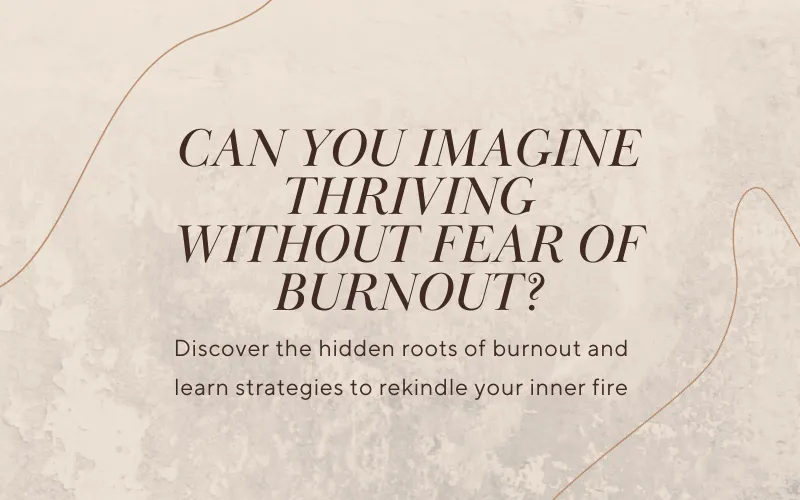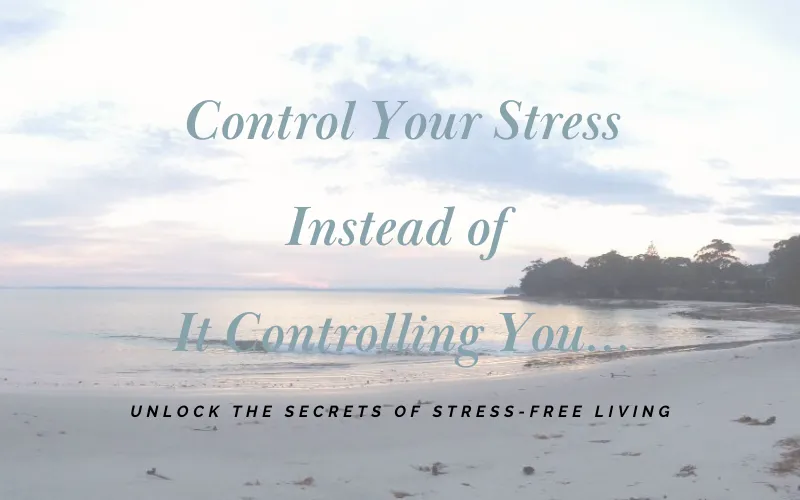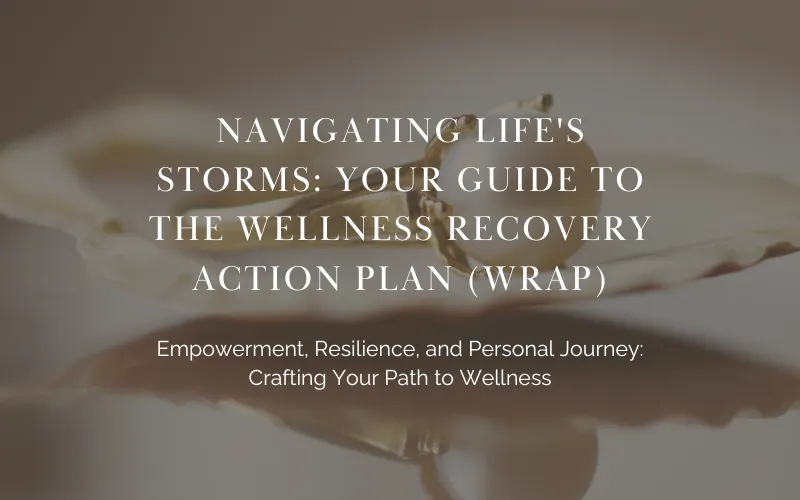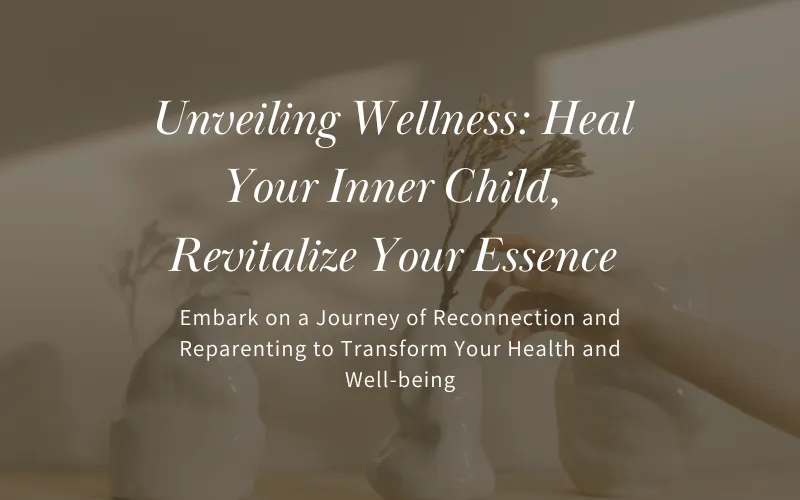Unlocking the Benefits of NSDR for Stress Relief

Imagine a practice offering profound relaxation, stress relief, and renewed energy to carry you through your day, even on little sleep. Non-Sleep Deep Rest (NSDR) does exactly that. It guides you into a meditative state, promoting deep rest and rejuvenation to approach your day and its challenges with clarity and ease. While it shares similarities with yoga nidra and other relaxation techniques, NSDR sets itself apart with its unique and effective methodology. Engaging in NSDR helps reduce stress and anxiety, improve sleep quality, and enhance cognitive function, leaving you feeling more grounded and ready to face whatever life throws your way. This transformative practice is a cornerstone for achieving balance, making it an indispensable tool for enhancing well-being and overall quality of life.
Key Takeaways
- NSDR is a powerful practice that promotes deep relaxation, stress relief and increased energy without requiring sleep, making it accessible to everyone.
- Incorporating NSDR into your daily routine can significantly improve your mental clarity, emotional balance, and sleep quality.
- Practising NSDR for just 10-30 minutes daily can help reduce stress, enhance cognitive function, and support your immune system.
- NSDR is particularly beneficial for highly sensitive individuals and trauma survivors, providing a safe space to manage overwhelming emotions.
- To get started with NSDR, find a quiet space, focus on your breath, and notice when you should practice in the day for maximum benefits.
Get your free NSDR Meditation HERE
Understanding NSDR
What is NSDR?
Definition and core principles.
Non-Sleep Deep Rest (NSDR) is a transformative practice that allows you to experience the benefits of deep sleep without falling asleep. By slowing brain wave frequencies, stabilizing heart rate variability (HRV), and regulating the nervous system, NSDR facilitates profound relaxation and recovery while you remain awake. This technique supports mental clarity, reduces stress, and promotes physical healing. It empowers you to harness the rejuvenating power of rest, enhancing your overall well-being and resilience in everyday life.
Origins and development.
Dr. Andrew Huberman, a neuroscientist at Stanford University, pioneered NSDR. Over the past decade, Dr. Huberman has studied and practised NSDR, uncovering its potential to enhance memory, reduce stress, enhance energy levels and improve cognitive function. During his involvement with trauma clinics, he observed the use of yoga nidra to support the well-being of participants. He noticed significant improvements in their overall health and mental resilience, which inspired him to further explore and refine this approach. His work underscores the scientific foundation of NSDR, making it a credible and effective tool for stress relief and enhanced well-being.
NSDR: Your Anytime Solution for Rest, Focus, and Resilience
After a restless night
You can turn to NSDR after a poor night's sleep. It offers a quick way to reset your mindset, providing the mental clarity and focus you need to approach the day ahead. With NSDR, you can ease the grogginess and fatigue that follow a restless night, setting a positive tone for the rest of your day.
During a stressful shift at work
During a hectic workday, NSDR acts as a moment of calm in the storm. Taking just a few moments to practice NSDR can help you manage stress and maintain emotional stability. It allows you to recharge and refocus, enhancing your productivity and resilience in the face of workplace challenges.
Before bed
Incorporating NSDR into your bedtime routine can significantly improve your sleep quality. By calming your nervous system and reducing anxiety, NSDR prepares your mind and body for restful sleep. This practice not only enhances your sleep but also promotes a sense of balance and peace that carries into the next day.
The Benefits of NSDR for Stress Relief

Scientific Evidence Supporting NSDR
Scientific research highlights the profound benefits of NSDR in reducing stress and anxiety. Studies from trauma clinics reveal that NSDR significantly lowers cortisol levels, the hormone associated with stress. This reduction promotes a sense of calm and emotional stability. By engaging in NSDR, you can experience enhanced mental well-being and improved emotional regulation. Experts emphasize that NSDR not only reduces stress but also boosts the immune system by decreasing inflammation. Chronic stress often weakens the immune system, making you more susceptible to illnesses. Therefore, incorporating NSDR into your routine can be a powerful tool for maintaining your health.
Impact on the Nervous System
NSDR has a remarkable impact on the nervous system. It calms your mind and body, leading to a more balanced emotional state of being. By practising NSDR, you can lower your stress response and achieve a profound sense of internal tranquillity. This practice not only enhances your mood but also boosts your energy levels, providing the reset your body needs.
Engaging in NSDR allows your nervous system to recover and reset, leading to improved focus, sharper concentration, and a greater capacity to handle daily challenges. Its calming effects make NSDR a powerful tool for anyone looking to enhance their well-being and achieve a harmonious connection between mind and body.
NSDR for Highly Sensitive People, Empaths and Individuals Impacted by Trauma
NSDR for Highly Sensitive People (HSPs)
Highly Sensitive People often experience intense emotions and heightened sensitivity to sensory input, which can lead to overstimulation and burnout. NSDR provides a sanctuary of calm, offering a safe and structured way to unwind and reset. By engaging in this practice, HSPs can:
- Recharge emotionally: NSDR helps release accumulated stress, allowing HSPs to regain their balance.
- Reduce overstimulation: The calming effects of NSDR soothe the nervous system, making it easier to process sensory input.
- Build resilience: Regular practice enhances an HSP's ability to navigate a world that often feels overwhelming.
NSDR empowers HSPs to maintain their emotional well-being and thrive, even in demanding environments.
NSDR for Empaths
Empaths often absorb the emotions and energy of others, which can leave them feeling drained or emotionally burdened. NSDR acts as a powerful tool for empaths by:
- Clearing emotional energy: NSDR provides a moment to release what isn’t theirs to carry, restoring emotional clarity.
- Rebuilding boundaries: The practice creates a mental and emotional reset, helping empaths reinforce their boundaries.
- Enhancing self-care: By nurturing their energy and well-being, empaths can show up more fully for themselves and others.
Incorporating NSDR into their routines helps empaths protect their energy while maintaining their natural capacity for compassion and connection.
NSDR for Those Healing from Trauma
Trauma can leave deep imprints on the nervous system, making relaxation and emotional regulation difficult. NSDR offers a gentle yet impactful way for trauma survivors to heal and rebuild. It benefits them by:
- Calming the nervous system: NSDR helps shift the body out of "fight or flight" mode, reducing hypervigilance and promoting a sense of safety.
- Reducing anxiety: The practice supports trauma survivors in managing intrusive thoughts and overwhelming emotions.
- Encouraging recovery: NSDR fosters a state of deep relaxation, allowing the body and mind to recover from the effects of chronic stress.
For trauma survivors, NSDR serves as a stepping stone to healing, providing a safe and effective method to nurture emotional and physical recovery.
How to Practice NSDR

Getting Started with NSDR
Basic techniques and tips for beginners.
Embarking on your NSDR journey can be an exciting and deeply rewarding experience. Start by creating a quiet, comfortable space where you can fully relax without distractions. Close your eyes and focus on your breath, allowing your body to gradually settle into a state of calm. Begin with short sessions of 10-30 minutes and experiment with the time of day that best supports your well-being. While NSDR can be practised multiple times a day, consistency is key and aim to incorporate it into your daily routine to truly unlock its transformative benefits.
Slowing your heart rate with breath
Breath control plays a crucial role in NSDR. By focusing on slow, deep breaths, you can effectively slow your heart rate and enter a state of deep relaxation. Inhale deeply through your nose, hold for a moment, and then exhale slowly through your mouth as if you are blowing into a straw. This simple technique not only calms your nervous system but also enhances your overall sense of well-being. As you practice, you'll find it easier to achieve a meditative state, allowing stress and tension to melt away.
Recommended resources and guides.
To get the most out of your NSDR journey, having the right resources and guidance is essential. Many apps and guided meditations are available, but finding one tailored to your specific needs can make all the difference. That’s why I’ve created a custom NSDR meditation, accompanied by 3.2Hz delta brain wave binaural beats music, designed to deepen your relaxation and enhance your experience. This guided session will help you achieve profound rest, reduce stress, and support your overall well-being. Download it now and take the first step toward transforming your energy and focus.
Get your free NSDR Meditation HERE
Integrating NSDR into Daily Life
Creating a routine.
Incorporating NSDR into your daily life requires establishing a routine that works for you. Choose a time of day when you can consistently dedicate a few minutes to your practice. Whether it's in the morning to start your day with clarity or in the evening to unwind, consistency will help you reap the full benefits. As Dr. Andrew Huberman suggests, practising NSDR for 10-30 minutes daily can significantly enhance your memory, cognitive function, and stress levels.
Overcoming common challenges.
As with any new practice, integrating NSDR into your routine may come with challenges. Distractions, restlessness, or difficulty focusing are normal hurdles when starting. To ease these, create a dedicated, distraction-free space for your practice. If external noise is an issue, use headphones and listen to guided NSDR sessions to help you stay grounded.
It’s also common for emotions to surface during NSDR. This is a natural part of releasing stress and tension stored in the body. If this happens, acknowledge your feelings without judgment. Create a sense of safety by gently placing your hand on your heart or giving yourself a comforting hug. These small acts of self-compassion can help you process emotions while maintaining a calm and supportive environment.
Patience is key. With time and consistency, entering a state of deep rest will become easier, allowing you to experience the full range of benefits NSDR offers. Trust the process and be kind to yourself as you navigate this transformative journey.
What NSDR Is Not
While NSDR is a powerful tool for relaxation and rejuvenation, it’s important to understand its limitations and proper use:
- NSDR is not a replacement for sleep: For individuals with insomnia, NSDR can help calm the nervous system and prepare your mind for rest, but it is not a substitute for the restorative functions of actual sleep. If you’re struggling with chronic sleep issues, it’s essential to address them with proper medical guidance.
- NSDR is not about productivity or “pushing through”: Overachievers and those who push themselves too hard may be tempted to view NSDR as another task to check off their list. NSDR is about fostering rest and recovery, not squeezing more productivity out of your day. Its purpose is to help you slow down, recharge, and create balance—not to enable overexertion.
- NSDR is not a cure for chronic health conditions: For individuals with Chronic Fatigue Syndrome (CFS) or other health challenges, NSDR can be a supportive practice to promote relaxation and alleviate stress. However, it’s not a stand-alone solution for managing these conditions. It works best when integrated with other therapeutic interventions tailored to your needs.
By understanding what NSDR is—and isn’t—you can approach the practice with the right mindset, using it as a tool for well-being rather than another demand on your time or energy.
Final Words....
NSDR is more than just a relaxation technique—it’s a transformative tool for achieving balance and well-being in today’s fast-paced world. By making NSDR a part of your daily routine, you can cultivate mental clarity, emotional stability, and a renewed sense of energy. This practice empowers you to navigate life’s challenges with greater resilience, fostering improved sleep, reduced stress, and enhanced overall vitality.
Embrace NSDR as a cornerstone of your wellness journey. With consistency and intention, you’ll not only feel more grounded but also experience the profound benefits of deep rest and renewal. Take this step toward a more harmonious, vibrant life—your well-being deserves it.
FAQ
What is Non-Sleep Deep Rest (NSDR)?
NSDR, or Non-Sleep Deep Rest, is a transformative practice designed to rejuvenate your mind and body without requiring you to fall asleep. It guides you into a state of profound relaxation, similar to meditation or yoga nidra, allowing you to experience the benefits of deep rest, recovery, and enhanced well-being.
How does NSDR differ from traditional meditation?
While both NSDR and meditation aim to calm the mind, NSDR specifically focuses on achieving a state of deep physical and mental rest without the need for mindfulness exercises or achieving meditative awareness. NSDR emphasizes relaxation and recovery, making it particularly effective for restoring energy and balance.
Can anyone practice NSDR?
Absolutely! NSDR is accessible to everyone, regardless of age, background, or experience. Its simplicity and adaptability make it a versatile tool that anyone can use for stress relief, emotional regulation, and physical recovery.
How long should I practice NSDR each day?
You can start with short sessions of about 10-30 minutes but work with whatever is comfortable for you. Practising NSDR daily can significantly enhance your mental clarity reduce stress, and improve your overall health.
What are the benefits of practising NSDR regularly?
Consistent NSDR practice can lead to:
- Reduced stress and anxiety.
- Improved sleep quality and deeper rest.
- Enhanced cognitive function, including memory and focus.
- Better emotional balance and resilience.
- Support your immune system by reducing inflammation and promoting recovery.
Is NSDR suitable for people with busy schedules?
Yes, NSDR is ideal for those with hectic lifestyles. You can practice it in as little as 10 minutes, whether after a restless night, during a stressful day, or as part of your bedtime routine. Its flexibility allows you to incorporate it seamlessly into your schedule.
Can NSDR help with sleep issues?
Indeed, NSDR can improve your sleep quality. By calming your nervous system and reducing anxiety, it prepares your mind and body for restful sleep. Incorporating NSDR into your evening routine can contribute to better sleep and a more balanced life.
Are there any resources to help me get started with NSDR?
Many resources are available online, as well as resources from experts like Dr. Andrew Huberman. To support your journey, I’ve created a custom NSDR meditation with 3.2Hz delta brain wave binaural beats to deepen your relaxation and enhance your experience. Download it today and take the first step toward transforming your well-being.
Get your free NSDR Meditation HERE
How can NSDR benefit highly sensitive people and trauma survivors?
NSDR offers a safe space for highly sensitive individuals and trauma survivors to manage overwhelming emotions and sensory input. It gently calms the nervous system, promotes relaxation, and supports healing. This makes NSDR a valuable tool for building resilience and fostering emotional well-being.
What should I do if I encounter challenges while practising NSDR?
Challenges like distractions or restlessness are normal. Create a quiet, dedicated space for your practice and use headphones for guided sessions if needed. If emotions arise during NSDR, acknowledge them without judgment and comfort yourself with a grounding gesture, like placing a hand on your heart. With patience and consistency, NSDR will become easier and more effective.
References
- Huberman Lab. (n.d.). NSDR Protocols: 10-Minute and 20-Minute Sessions for Deep Relaxation and Rejuvenation. Retrieved from Huberman Lab
- Medium - Mystic Minds. (n.d.). Guide to Non-Sleep Deep Rest (NSDR). Retrieved from Medium
- Mudwtr Blog. (n.d.). Non-Sleep Deep Rest: 3 Things to Know. Retrieved from Mudwtr
- Virtusan. (n.d.). Exploring the Benefits of NSDR. Retrieved from Virtusan
- Cultivate Co. (n.d.). NSDR as a Tool for Sustainable Performance. Retrieved from Cultivate Co.
- OTER Group. (n.d.). Exploring NSDR: A 20-Minute Protocol for Peak Relaxation with Dr. Andrew Huberman. Retrieved from OTER Group
- The Natural Health Market. (n.d.). Harnessing the Power of NSDR for Mental and Physical Well-Being. Retrieved from The Natural Health Market
- Recovery Guru. (n.d.). NSDR for Brain and Body Benefits. Retrieved from Recovery Guru

